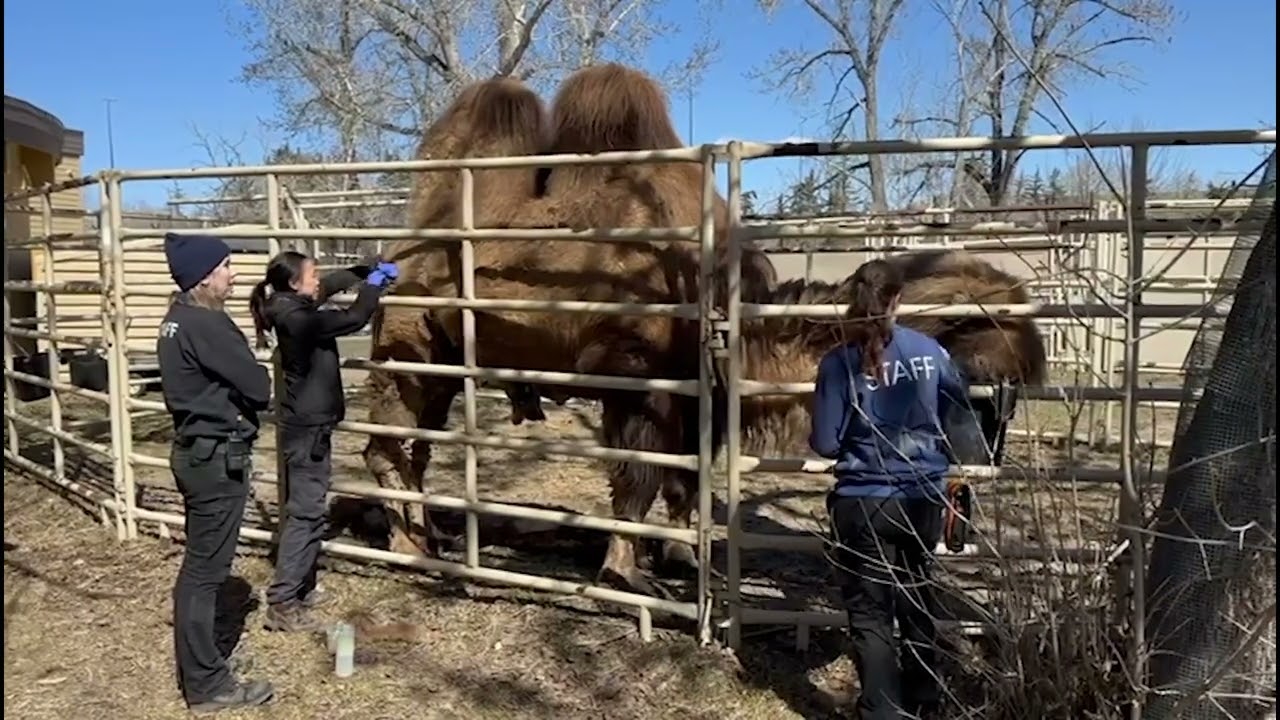– The role of veterinary care in zoo management and wildlife conservation
– Understanding the Bactrian camel: An overview of its biology and conservation status
– The importance of public education and engagement through wildlife care demonstrations
– Technological advancements in veterinary practices for large mammals
Zoos and wildlife conservation parks around the globe play a crucial role in preserving species, educating the public, and conducting vital research. A recent event highlighting the intersection of these goals involved a Bactrian camel named Zsa Zsa, who received an injection as part of a routine veterinary care procedure. This incident is an excellent example to discuss broader topics relevant to zoo management, wildlife conservation, and zoological education.
Veterinary care is a cornerstone of effective zoo management and wildlife conservation. Keeping animals healthy in captivity requires a comprehensive understanding of their physiology, potential health issues, and treatment methods. The video of Zsa Zsa, the Bactrian camel, receiving an injection illuminates the careful planning and expertise required to perform medical procedures on large mammals. Veterinary professionals must have a deep knowledge of the animal’s anatomy to safely deliver vaccinations or treatments without causing undue stress or discomfort.
Bactrian camels, with their distinct two humps, are incredibly fascinating creatures adapted to harsh desert environments. Unlike their single-humped counterparts, the dromedaries, Bactrian camels are native to Central Asian rocky deserts. They have evolved several biological traits to survive in such extremes, including the ability to go without water for months and thick fur to protect against cold and heat. Despite their resilience, Bactrian camels face threats from habitat loss and hunting. Their conservation status, classified as critically endangered for the wild species, calls for urgent action to preserve their natural habitats and prevent further decline.
Public education and engagement are vital aspects of wildlife conservation. Demonstrations, such as the one featuring Zsa Zsa getting an injection, serve an educational purpose by exposing the public to the behind-the-scenes efforts of zookeepers and veterinary staff. These interactions foster a connection between zoo visitors and animals, encouraging a deeper understanding of and commitment to conservation efforts. They demystify the processes involved in animal care, highlighting the importance of regular health check-ups and the challenges faced by zoo professionals in handling different species.
Technological advancements have significantly improved veterinary practices for large mammals. Innovations in medical equipment, such as portable ultrasound and X-ray machines, have allowed thorough examinations with minimal animal stress. The pharmacological developments have also led to safer, more effective medications and sedatives, making procedures like the one Zsa Zsa went through routine and relatively low risk. These advancements support not only the health and well-being of zoo animals but also contribute to the broader field of wildlife medicine, offering insights that can aid in the care of endangered species in the wild.
The injection received by Zsa Zsa, the Bactrian camel, is a window into the complex, multifaceted world of zoo management and wildlife conservation. Veterinary care stands out as a pillar of animal welfare, ensuring species like the Bactrian camel receive the attention and treatment necessary for their health and preservation. Additionally, this event underscores the importance of public education in fostering a culture of conservation and the role of technology in enhancing the capabilities of wildlife care professionals. Through such efforts, zoos play an integral role in the global endeavor to protect and conserve the planet’s biodiversity for future generations.
*****
Source Description
Happy #HumpDay! It’s time to give our two-humped Bactrian camel ‘Zsa Zsa’ three cheers! 🙌
Now considered a senior at 18 years of age, Zsa Zsa has been experiencing some age-related arthritis. Over the past several months, Zsa Zsa’s dedicated care team has been training her to prepare for voluntary injections of pain medications to help with her stiffness. After only a few months, Zsa Zsa received her first voluntary injection and as you can see, she stayed calm throughout, demonstrating the strong bond that she has with her care team and the tremendous trust she places in them. 🐫
Thank you to our Animal Care, Health & Welfare team for looking after the animals that we love! 💗
#YourZooYYC #AnimalWellbeing


